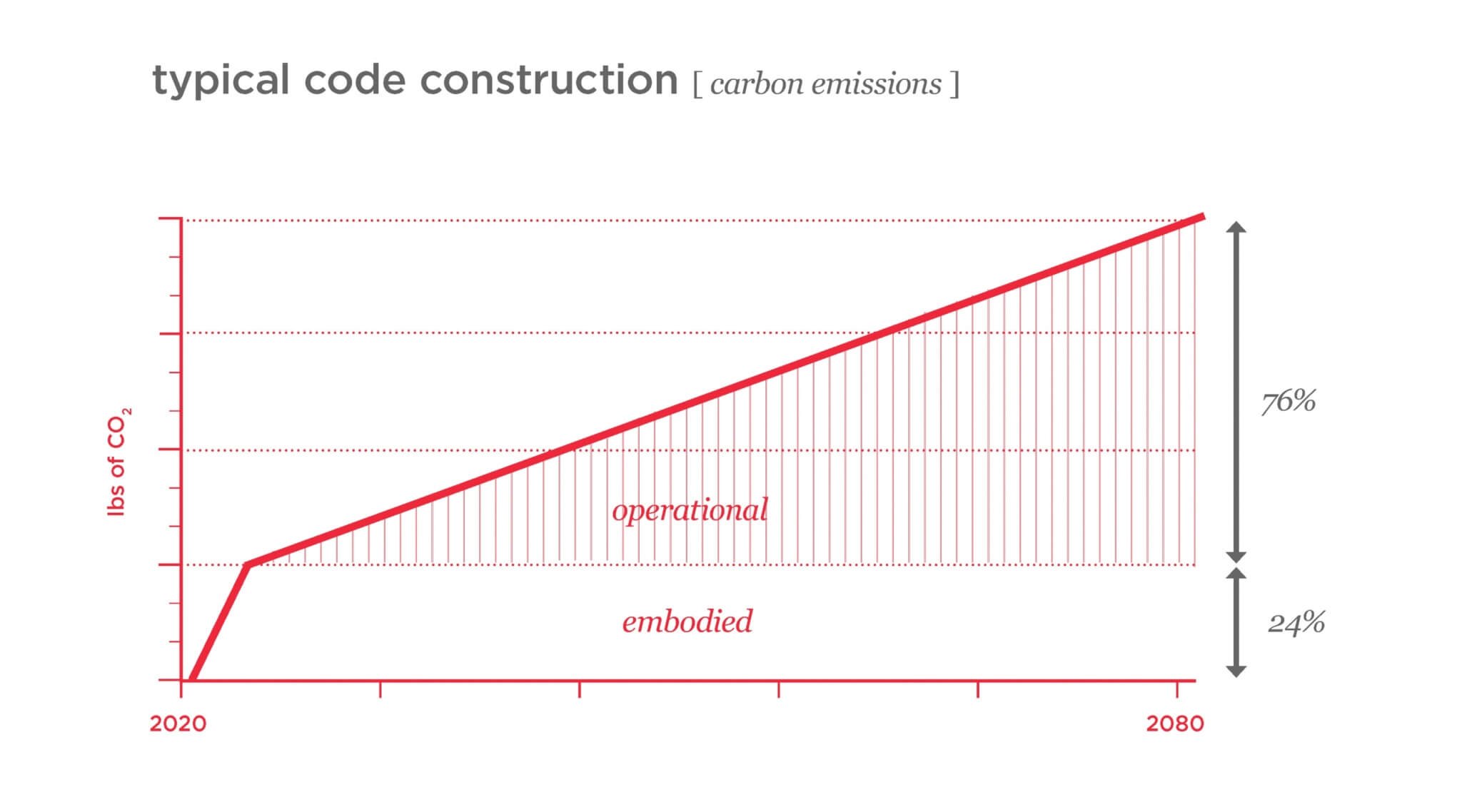What is RESNET’s Carbon Rating Index?
RESNET recently released their Carbon Rating Index, signifying a critical shift towards decarbonization for the new construction industry.
The leading cause of climate change is carbon dioxide emissions and buildings account for over 35% of greenhouse gas emissions. Thus, the decarbonization of our buildings is critical to limiting the effects of climate change and reaching our global climate goals. As members of the homebuilding industry, we must take active measures to reduce every new home’s emissions.
To do so, we must have a reliable, accurate way to measure a home's energy usage and subsequent emissions. Until now, the homebuilding industry has primarily relied on the combination of annual average emissions and the HERS Rating Index to measure the energy efficiency of new homes. While the HERS Rating Index is instrumental towards this effort, it does not paint the entire picture of carbon emissions.
RESNET’s new Carbon Rating Index does just that, providing a more accurate metric for measuring emissions that addresses when energy is used and how much it can be reduced.
How Does it Work?
RESNET developed the basis for the CO2e Rating Index, ANSI Standard ICC 301 2022 Addendum B, in conjunction with the Natural Resources Defense Council (NRDC), the Consortium for Energy Efficiency (CEE), the California Energy Commission (CEC), and the National Renewable Energy Laboratory (NREL). The standard dictates how to calculate the carbon impacts of an individual house or building.
The system calculates a home’s emissions by:
Using hourly CO2e emission rates and electricity generation emission projections as published by the National Renewable Energy Laboratory (NREL).
Combining these values with the hourly energy consumption given by the calculation of the HERS Index to provide a new metric valuing the carbon emissions when energy is used.
In practice, a RESNET-accredited HERS software will take the information entered into the energy model for a HERS Rating and then use that information to calculate the CO2e Index Score. The best part of this calculation is that no additional information or inspections are needed.
Why is the CO2e Index Important for Builders?
Like most other industries, the construction industry is becoming increasingly focused on limiting emissions and making progress towards climate goals. Builders are facing increasing pressure from federal, state, and local legislation to build homes according to the requirements of new energy initiatives.
In addition, builders have some key incentives to leverage this index in order to limit the emissions of their projects, such as:
More accurate and robust ESG reporting
Ability to earn incentives from utility rebate programs
Increased demand for “green,” healthy, and efficient homes from homebuyers
What About Embodied Carbon?
Embodied carbon is the carbon emissions released during the lifecycle of building materials themselves. The CO2e rating index does not cover embodied carbon emissions. The stages of emissions include material extraction, manufacturing, transportation, and disposal. The majority of embodied carbon emissions are seen during the raw material supply chain and manufacturing of products (65-85%). This phase of emissions is often referred to as Cradle-to-Gate emissions since they occur before a building is constructed.
Embodied carbon accounts for 11% of global carbon emissions, and about ¼ of building industry emissions. These emissions carry a disproportionate effect on climate change because they are emitted in a chunk before a building is constructed. Embodied emissions affect the atmosphere immediately whereas operational emissions accrue over the lifespan of a building (see below).
RESNET has announced an Advisory Committee to Investigate the Embodied Carbon Standard Development. While an embodied carbon standard is not officially in the works, the committee is investigating whether it can or should be a standalone carbon emissions standard. The current CO2e rating index does not account for embodied carbon.
When Will Ekotrope Support the New Carbon Index?
Our team is very excited about the new CO2e Rating Index as it allows us to calculate the benefits of electrification for any residential building in the U.S. This represents a very powerful and critical step forward in reaching our global climate goals via the decarbonization of homes.
We thank you for your patience as our team works diligently to incorporate the new index into Ekotrope RATER. We are working closely with RESNET to do so and hope to fully support it before Q4.
We encourage you to read more about the CO2e Rating Index on RESNET’s website.
Please stay tuned for updates from Ekotrope and if you have any questions, please reach out to us at info@ekotrope.com.

